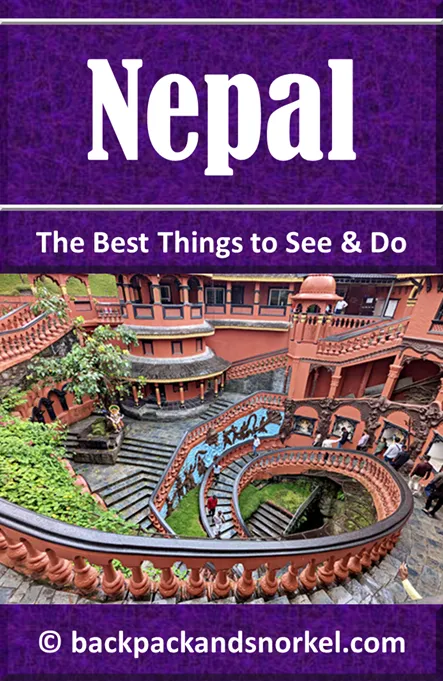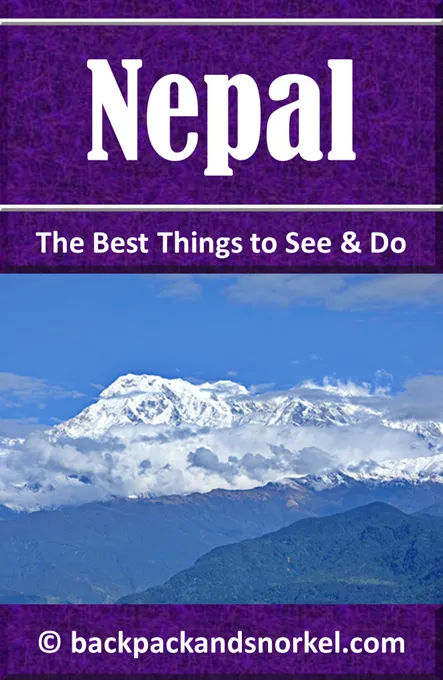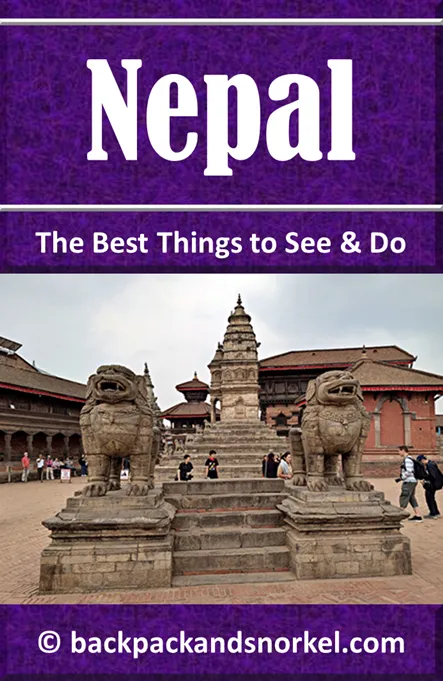Explore Phewa Lake by Boat: Your Guide to Rentals in Pokhara - Nepal Purple Travel Guide
(map, reviews)
This is Premium Content! To access it, please download our
Backpack and Snorkel Purple Travel GuidePhewa Lake is also called Fewa Lake, Phewa Tal, Phewa Taal, and was formerly called Baidam Tal.
It is the second largest lake in Nepal, and the most visited lake in Nepal. Phewa Lake is located at an altitude of 2,434 ft (742 m), covers an area of about 2.2 sq mi (5.7 km2), has an average depth of about 28 ft (8.6 m), and a maximum depth of 79 ft (24 m).
Analyses of sediments from the lake show that it must have formed around 12,640 – 12,025 BC.
It has lush hills on its western side and offers stunning reflections of the Annapurna and Machhapuchhre (Fishtail) mountains on sunny and windless days.
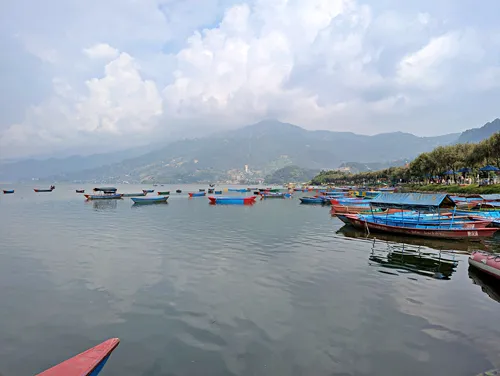
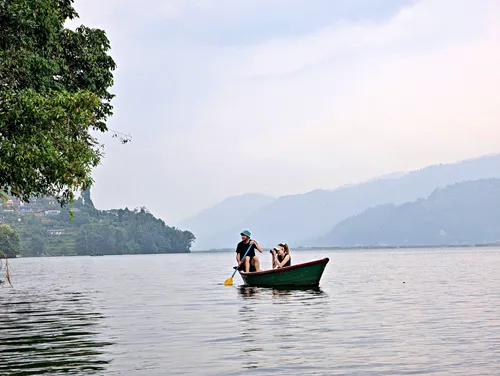


Origin of the Name Phewa Lake
The lake’s name, Phewa Taal, is believed to be derived from:
‘Taal’ is Nepali word for ‘lake’
While its exact linguistic origin of ‘Phewa’ is debated, it could either simply denote the Nepali name for the lake and thus be meaningless, or it could be a local or regional variation of the word ‘Pokhari’ means ‘pond’ or ‘lake’.
Tal Barahi Temple
A short boat ride off the shore, on a tiny island in the middle of Phewa Lake sits Tal Barahi Temple.
This two-story pagoda-style Hindu temple offers not just religious significance but also a memorable cultural experience for visitors boating across the lake.
Be advised that you need to pay admission if you want to get to the island on which Tal Barahi Temple sits.
Origin of the Name Tal Barahi
The name ‘Tal Barahi’ combines two Nepali words:
Tal, meaning ‘lake’
Barahi, is referring to the Hindu goddess Barahi, a powerful incarnation of Durga, who is worshipped for protection and strength.
Thus, Tal Barahi translates to ‘Barahi of the Lake’, a fitting name for a temple that seems to float peacefully at the center of Pokhara’s most famous body of water.
What to do at Phewa Lake
You can either walk along the waterfront on the eastern side of the lake, enjoy a boat ride on the lake, or buy a transfer to the hiking trail on the other side of the lake that goes steep up the hill to World Peace Pagoda.
To enjoy the boat ride, you have to buy a ticket first – the ticket is valid for the boat and not per person. I believe we paid Rs500 (plus tip at the end of the boat ride) for a 1h boat ride with a local who rowed the boat. There are more expensive tickets for longer rides. It is said that you can even rent kayaks, but we did not see any kayaks.
While the person at the ticket office speaks English, the boat rowers typically only speak Nepalese. They have their predetermined routes from which they only seem to be willing to make short detours.
Back to your self-guided tour
Author: Rudy at Backpack and Snorkel
Bio: Owner of Backpack and Snorkel Travel Guides. We create in-depth guides to help you plan unforgettable vacations around the world.
Other popular Purple Travel Guides you may be interested in:
Like this Backpack and Snorkel Purple Travel Guide? Pin these for later:

